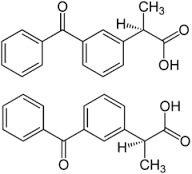- Home Page
- About Surya
-
Business Segment
- Intermediates
- Meta Hydroxy Acetophenone
- Benzohydrol | C13H12O
- Meta Bromo Anisole
- Meta Bromo Phenol
- Meta Amino Benzoic Acid
- Cis Bromo Benzoate
- 4-(Cyclopropylcarbonyl)-alpha,alpha-dimethylbenzeneacetic Acid
- 2-(4-(Cyclopropanecarbonyl)Phenyl)-2-Methylpropanoic Acid
- Methyl 2-(4-(4-Chlorobutanoyl)Phenyl)-2-Methylpropanoate
- 4- Hydroxycoumarin
- 2,3-Lutidine C7H9N
- Meta Bromo Benzaldehyde
- Meta Phenoxy Benzaldehyde
- Tetra Butyl Ammonium Bromide
- 3-Bromo-N,N- Dimethylaniline
- Benzhy drol
- 4- Hydroxycoumarin
- 2.,3 Lutidine
- 4- Bromobenzaldehyde
- 4-Bromobenzyl Alchol
- 2-(4-(4-(4-(Hydroxy Diphenyl Methyl)-1- Piper-Idine)-1- Oxobutyl)Phenyl)-2,2- Dimethyl Acetic Acid Methyl Ester
- Methyl 2-(4-(4-Chlorobutanoyl)Phenyl)-2- Methyl Propanoate
- 4-(Cyclopropyl-Oxo-Methyl)-Alpha, Alpha- Dimethyl Phenyl Acetic Acid
- 4-(Cyclopropyl-Oxo-Methyl)-Alpha, Alpha- Dimethyl Phenyl Acetic Acid Cyclohexylamine Salt
- Alpha, Alpha Dimethyl Phenyl Acetic Acid
- Isonipecotic Acid
- Meta Bromo Benzyldehyde
- Meta Phenoxy Benzyl Alcohol
- Meta Bromo Nitro Benzene
- 4 Hydroxycoumarin
- Mannich HCL
- Para Bromobenzaldehyde
- Para Bromobenzyl Alcohol
- Para Bromo Toulene
- Para Bromo Aniline
- Acetyl Hydrazide
- 2-Amino -3, 5- Dibromo Benzaldehyde
- 3-Hydroxy-A-(N-Methyl-N-Benzylamino) Acetophenone HCL
- Methyl Isonipecotate
- Ethyl Isonipecotate
- Tetrabutylammonium Bromide
- 3-(1-Cyanoethyl) Benzoic Acid (CEBA)
- Ethyl Benzoate
- 2-Amino-5-Methyl Thiazole
- 5-Bromo-2-Chlorobenzoic Acid
- APIs
- Agro Chemicals
- Perfumery & Fragrance
- Intermediate List
- 2,3-Diamino Pyridine
- 5-Bromo-2-Chlorobenzoic Acid
- Ethyl Benzoate
- 3-(1-Cyanoethyl) Benzoic Acid (Ceba)
- Trifluoroacetic Acid Isopropyl Ester
- Tetrabutylammonium Bromide
- Ethyl Isonipecotate
- Methyl Isonipecotate
- 3-Hydroxy-(N-Methyl-N Benzylamino) Acetophenone HCL
- Diphenyl(Pipe-ridin-4-YL) Methanol (Azacyclonol)
- 2-Amino-3, 5- Dibromo Benzaldehyde
- Acetyl Hydrazide
- Para Bromo Aniline
- Para Bromo Toluene
- Para Bromobenzyl Alcohol
- Para Bromobenzaldehyde
- Para Amino Benzonitrile
- Meta Bromo Nitro Benzene
- Meta Phenoxy Benzyl Alcohol
- Meta Bromo Benzaldehyde
- Meta Amino Benzoic Acid
- Meta Anisidine
- Meta Bromo Phenol
- Meta Bromo Anisole
- 6-Bromo-2Methoxy-3 Benzyl Quinoline
- Isonipecotic Acid
- Alpha Alpha Dimethyl Phenyl Acetic Acid
- 4-(Cyclopropyl-Oxo-Methyl)-Alpha, Alpha Dimethyl Phenyl Acetic Acid
- Methyl 2-(4-(Chlorobutanoyl)Phenyl)-2-Methylpropanoate
- APIS List
- API List
- Active Pharmaceutical Ingredients
- Lidocaine IP
- Bromhexine Hcl
- Fexofenadine IP/BP/USP
- Quetiapine Fumarate
- Ketoprofen IP/BP/USP
- Ambroxol IP/BP/USP
- Metoprolol Succinate
- Verapamil HCL
- Sitagliptin Phosphate
- Meloxicam (C14H13N3O4S2)
- Bromhexine HCL
- Tamsulosin HCL
- Meta Anisidine
- Etoricoxib CAS 202409-33-4
- 3-Bromoaniline C6H6BrN
- Parecoxib Sodium
- Metoprolol Tartarate (BP)
- Fexofenadine HCL
- Ketoconazole (IP, BP, USP 30)
- Amlodipine Besylate (BP)
- Cis -Tosylate
- Meta Bromoaniline
- p- Fluoromethoxybenzene
- 2-[4-[4-[4-(Hydroxydiphenylmethyl)-1-Piperidinyl]-1-Oxobutyl]Phenyl]-2,2-Dimethylacetic Acid Methyl Ester
- 4- Fluoroanisole
- Bromhexine HCL
- Fluconazole Powder
- Azacyclonol Pharmacutical Intermediate
- Meta Bromo Aniline
- Meta Bromoaniline
- 2-Amino Pyridine
- 3-(Trifluoromethyl)-5,6,7,8-Tetrahydro-[1,2,4]Triazolo[4,3-A] Pyrazine Hydrochloride
- 2,3-Diamino Pyridine
- Intermediates
- Research & Development
- We Care
- Contact Us
Lidocaine IP
950 INR/Kilograms
Product Details:
X
Lidocaine IP Price And Quantity
- 950 INR/Kilograms
- 100 Kilograms
Lidocaine IP Trade Information
- 1000 Kilograms Per Day
- 1 Week
- Contact us for information regarding our sample policy
Product Description
Lidocaine IP Indian Pharmacopoeia Full Description
Chemical Name
2DiethylaminoN26dimethylphenylacetamide
Molecular Formula
C14H22N2O
Molecular Weight
23434 gmol
Appearance
Lidocaine appears as a white or almost white crystalline powder
Assay
Lidocaine must contain not less than 990 and not more than 1010 of C14H22N2O calculated on the anhydrous basis This ensures the purity and efficacy of the drug
Identification
Lidocaine is identified using the following methods
Infrared Absorption Spectrophotometry The infrared absorption spectrum of the sample should be concordant with the reference spectrum
Chromatographic Methods The retention time of the major peak in the chromatogram of the test solution should correspond to that in the chromatogram of the standard solution
Solubility
Soluble in water
Freely soluble in ethanol 95 and in chloroform
Practically insoluble in ether
pH
The pH of a 1 aqueous solution of lidocaine should be between 45 and 65
Loss on Drying
Lidocaine should have a loss on drying of not more than 05 indicating the amount of moisture content in the substance
Related Substances
Impurities Specific limits are set for individual and total impurities
Heavy Metals Should not exceed specified limits
Melting Point
The melting point of lidocaine should be between 66C and 70C
Specific Optical Rotation
The specific optical rotation of lidocaine should be between 010 and 010
Storage
Store lidocaine in a wellclosed container protected from light This helps in maintaining the stability and potency of the drug
Usage
Lidocaine is widely used as a local anesthetic and antiarrhythmic agent It works by blocking nerve signals in the body providing pain relief and stabilizing the hearts electrical activity in arrhythmias
This comprehensive description ensures that lidocaine meets the stringent quality standards required by the Indian Pharmacopoeia ensuring its safety and efficacy for medical use
Tell us about your requirement

Price:
Quantity
Select Unit
- 50
- 100
- 200
- 250
- 500
- 1000+
Additional detail
Mobile number
Email







 Send Inquiry
Send Inquiry Send SMS
Send SMS Call Me Free
Call Me Free
